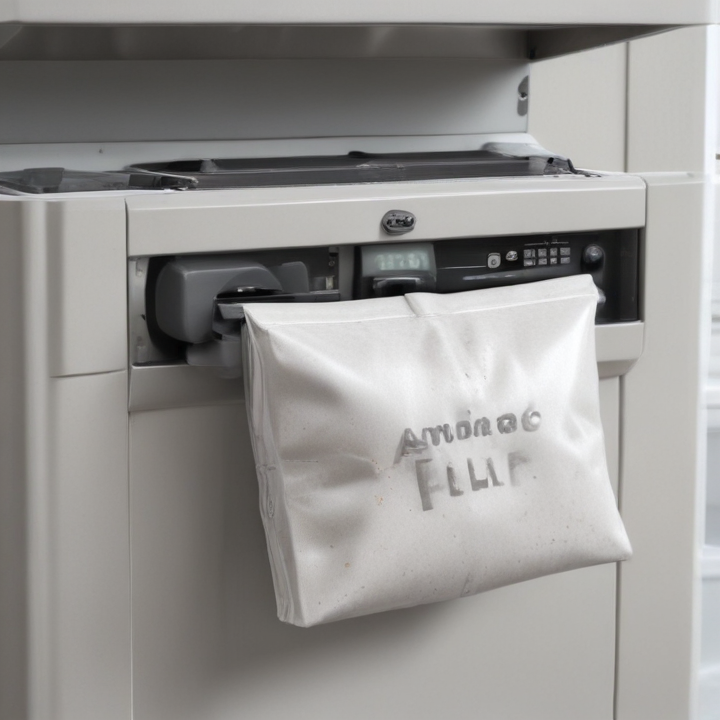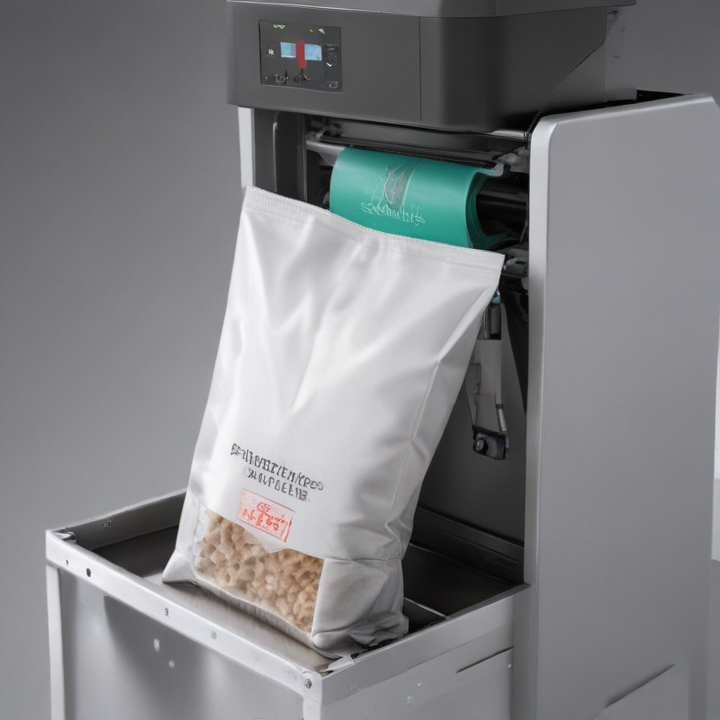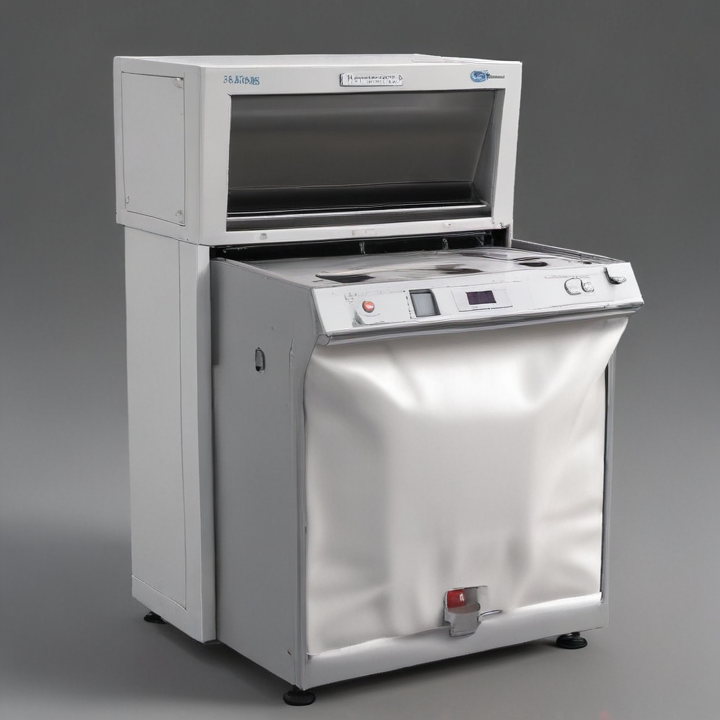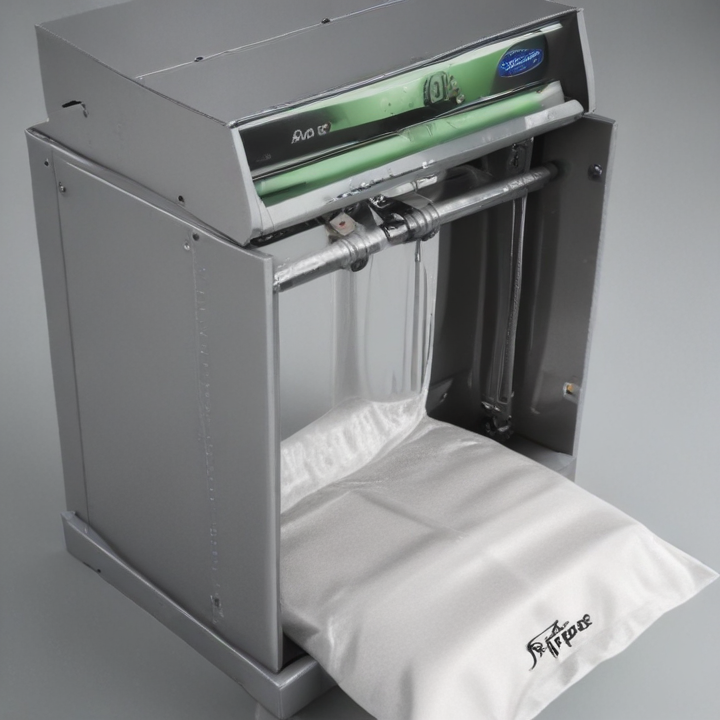List Technical Parameters of “automatic bag filler”
An automatic bag filler is a sophisticated machine designed to fill various types of bags with solid or liquid products efficiently and accurately. Below are key technical parameters that are essential for evaluating and optimizing its performance:
1. **Bag Type and Size Compatibility**: Accommodates different bag types (e.g., valve bags, open-mouth bags) and sizes, typically ranging from small pouches to large sacks.
2. **Filling Speed**: Measures output capacity, typically in bags per minute (BPM). Speeds can vary significantly, from 10 BPM to over 100 BPM depending on the machine model and application.
3. **Accuracy**: High precision in weight or volume to minimize product waste and ensure uniformity. Tolerance levels can be within ±1 to ±5 grams for small fills or within ±0.1% for larger fills.
4. **Material Compatibility**: Supports a variety of materials such as powders, granules, pellets, and liquids. Compatibility includes handling of abrasive or corrosive substances if required.
5. **Hopper Capacity**: Size of the storage hopper, affecting how much material can be contained and continuously fed into the filling chamber. Capacities can range from a few kilograms to several tons.
6. **Control System**: Equipped with an advanced PLC (Programmable Logic Controller) for automation, with user-friendly HMI (Human Machine Interface) for settings and monitoring.
7. **Power Requirements**: Operational voltage and power consumption, often listed in kW. Common industrial standards (e.g., 220V, 380V) are typically adhered to.
8. **Air Supply**: Pneumatic systems often require compressed air, with specifications like pressure (usually in bar) and air consumption (liters per minute).
9. **Construction Material**: Built with durable materials such as stainless steel for food-grade applications, or robust alloys for industrial use, ensuring longevity and compliance with sanitation standards.
10. **Integration and Connectivity**: Easily integrates with upstream and downstream equipment, featuring interfaces for data communication and IoT capabilities for remote monitoring and control.
11. **Safety Features**: Includes safety guards, emergency stop functions, and compliance with international safety standards (such as CE, UL).
12. **Maintenance Requirements**: Designed for easy access and minimal downtime, often featuring tool-free changeovers and self-diagnostic features.
Understanding these technical parameters helps in selecting the right automatic bag filler suited to specific production needs and ensures optimal operation and efficiency.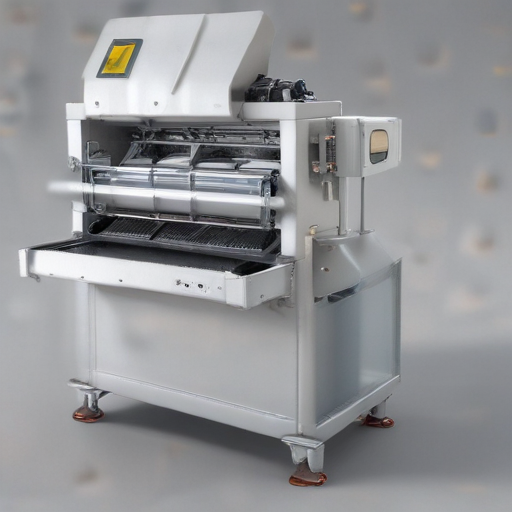
List Product features of “automatic bag filler”
1. **Precision Filling**: The automatic bag filler ensures accurate weight measurements, reducing product waste and guaranteeing consistency.
2. **High Speed Operations**: Capable of filling multiple bags per minute, it enhances productivity and meets high-demand requirements.
3. **Versatility**: Compatible with a wide range of bag sizes, types, and materials, including paper, plastic, and fabric.
4. **User-Friendly Interface**: Equipped with an intuitive touchscreen control panel for easy operation and quick adjustments.
5. **Adjustable Fill Rates**: Allows customization of fill rates to match specific production needs, optimizing efficiency.
6. **Advanced Sensors**: Features integrated sensors that detect bag presence and alignment to prevent spills and ensure proper sealing.
7. **Robust Construction**: Made with durable, high-quality materials to withstand heavy usage and harsh industrial environments.
8. **Automated Sealing**: Incorporates various sealing techniques (heat, ultrasonic, etc.) to ensure secure and tamper-proof bag closures.
9. **Minimal Maintenance**: Designed with easy-to-clean parts and components that require minimal maintenance, reducing downtime.
10. **Hygienic Design**: Complies with industry standards for food and pharmaceutical products, featuring easy sanitation procedures to prevent contamination.
11. **PLC Integration**: Compatible with Programmable Logic Controllers for seamless integration into existing production lines and systems.
12. **Safety Features**: Includes emergency stop buttons, safety enclosures, and interlock mechanisms to protect operators.
13. **Portability**: Often comes with wheels or modular design for easy relocation and reconfiguration within production facilities.
14. **Energy Efficient**: Built with energy-saving components that reduce power consumption and operational costs.
15. **Customizable Settings**: Provides options for various fill modes, such as volumetric, gravimetric, or a combination to suit different product types.
List Application of “automatic bag filler”
Automatic bag fillers are versatile machines used across various industries for efficient and precise filling of bags with different materials. Here are some key applications:
1. **Food and Beverage Industry:**
– **Rice, Flour, and Grains:** Automated fillers ensure accurate portions, enhancing consistency and quality control.
– **Snack Foods:** Chips, popcorn, and candies are efficiently packaged, reducing manual labor and increasing throughput.
2. **Pharmaceuticals:**
– Precise measurement and contamination prevention are critical, making automatic fillers ideal for packaging pills, powders, and medicinal granules.
3. **Chemical Industry:**
– **Powders and Granules:** Safely packaging hazardous chemicals like fertilizers, pesticides, and industrial salts benefits from the precision and safety features of these machines.
4. **Building Materials:**
– **Cement, Sand, and Gravel:** High-volume filling of heavy materials gets streamlined, improving operational efficiency and reducing labor costs.
5. **Agriculture:**
– **Seeds and Animal Feed:** Automatic fillers aid in the efficient bagging of seeds and feed, crucial for large-scale farming operations.
6. **Cosmetics:**
– Powders and granular cosmetic products are packaged with precision to maintain consistent quality and meet regulatory standards.
7. **Pet Food Industry:**
– Automated systems handle various pet food products, ensuring proper sealing and packaging, thus maintaining freshness and quality.
8. **Packaging Industry:**
– **Flexible Packaging:** Used in operations requiring custom packaging solutions, improving versatility and adapting to various product sizes and types.
9. **Recycling and Waste Management:**
– Filling bags with recycled materials or waste for disposal or processing, promoting sustainability and efficient resource use.
10. **Retail and Commercial Activities:**
– Various retail products, including bulk items like nuts, grains, and non-food items, are efficiently packaged for consumer markets, enhancing packaging speed and consistency.
Overall, the use of automatic bag fillers significantly boosts productivity, consistency, and safety across these industries, making them indispensable in modern manufacturing and packaging processes.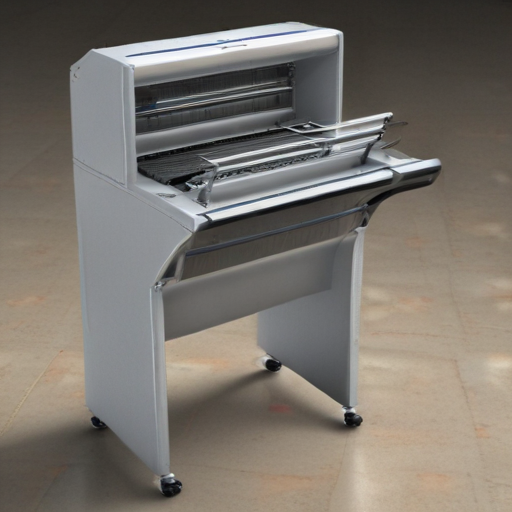
List Various Types of “automatic bag filler”
Automatic bag fillers are essential in industries requiring efficient and precise packaging of products. They come in various types to accommodate different needs and product characteristics. Here are several types:
1. **Volumetric Bag Fillers**:
– **Auger Fillers**: Ideal for powders and granular materials. They use a rotating screw to dispense set volumes of product.
– **Cup Fillers**: Suitable for free-flowing products like grains. They rely on adjustable cups to measure and release set volumes.
2. **Gravimetric Bag Fillers**:
– **Net Weigh Fillers**: Measure product weight before dispensing it into a bag, ensuring high accuracy.
– **Gross Weigh Fillers**: Measure the weight of the product directly as it’s filled into the bag.
3. **Valve Bag Fillers**:
– Designed for filling bags with small valves, they are often used for powdered products in industries like cement, chemicals, and food processing.
4. **Form, Fill and Seal (FFS) Machines**:
– These integrated systems form bags from rolls of flat material, fill them with product, and seal them in one continuous process. They are versatile and commonly used for a wide range of products.
5. **Vacuum Bag Fillers**:
– Ideal for vacuum-sealed packaging, commonly used in the food industry to extend product shelf life by removing air from the package.
6. **Open-Mouth Bag Fillers**:
– Designed for use with open-mouth bags, typically used for pet foods, grains, and other bulk materials.
7. **Valve Sack Fillers**:
– Used for products like flour, these fillers are designed to work with valve sacks, providing efficient and clean filling operations.
8. **Piston Fillers**:
– They are primarily used for viscous products like pastes, creams, or gels, using a piston to accurately measure and dispense product into bags.
9. **Bulk Bag Fillers**:
– Intended for very large volumes, these fillers are used to fill bulk bags (often called FIBCs or Big Bags), commonly seen in agriculture and construction.
Each type of automatic bag filler is designed to optimize efficiency and accuracy for specific products and packaging needs. The choice depends on factors like product type, packaging material, desired filling speed, and accuracy requirements.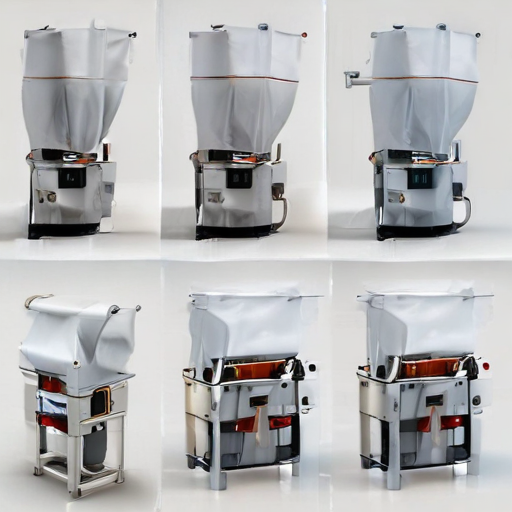
Custom Manufacturing Options for automatic bag filler
When selecting a custom manufacturing solution for an automatic bag filler, several options can be tailored to meet specific operational requirements. Key considerations include:
1. **Bag Type and Size**:
– **Standard vs. Custom Bags**: Machine design to accommodate standard bag sizes or customized to handle unique dimensions and materials.
– **Bag Material**: Compatibility with paper, plastic, or woven polypropylene.
2. **Filling Mechanism**:
– **Gravity Fillers**: Ideal for free-flowing materials like grains or pellets.
– **Auger Fillers**: Suitable for powders and non-free-flowing substances.
– **Vacuum or Pump Fillers**: Efficient for liquids and semi-liquids.
3. **Automation Level**:
– **Semi-automatic**: Operator involvement required in bag positioning and sealing.
– **Fully-automatic**: Complete automation of the filling, sealing, and packaging process, minimizing manual intervention.
4. **Throughput and Accuracy**:
– **Speed**: Customizable to achieve desired production rates.
– **Weighing Accuracy**: Integration of precise weighing systems to ensure consistent fill levels.
5. **Integration with Existing Systems**:
– **Conveyor Systems**: Ensure smooth transitions and reductions in manual handling.
– **Control Systems**: Incorporation of advanced PLC (Programmable Logic Controller) technology for seamless operations.
6. **Safety Features**:
– **Interlocks and Guards**: Protect operators from potential hazards.
– **Dust Extraction**: Systems to maintain a clean and safe working environment.
7. **Material Compatibility**:
– **Corrosion-resistant Options**: For chemicals or abrasive materials.
– **FDA-Compliant Materials**: For food-grade applications.
8. **Custom Electronics and Software**:
– **User Interface**: Tailored HMI (Human Machine Interface) for easy operation.
– **Data Logging**: Capabilities for tracking and analyzing production metrics.
9. **Specialized Features**:
– **Multi-head Configurations**: For increased efficiency and different product types.
– **Bag Conditioning**: Options like de-aeration or nitrogen filling for specific requirements.
By carefully considering these customizable attributes, an automatic bag filler can be precisely tailored to meet the unique demands of any production environment.
List Quality Control and The Manufacturing Process of “automatic bag filler”
### Quality Control for Automatic Bag Filler
1. **Design Verification**: Ensure design specifications meet industry standards and customer requirements.
2. **Component Inspection**: Verify quality of incoming materials and components using standardized tests.
3. **Assembly Validation**: Confirm proper assembly with checklists and assembly flowcharts.
4. **Operational Testing**: Test machine functions including speed, accuracy, and safety.
5. **Calibration**: Regular calibration of sensors, scales, and control systems.
6. **Load Testing**: Simulate various load conditions to check machine durability and performance.
7. **Software Verification**: Inspect control software for bugs and compliance with functional requirements.
8. **Finished Product Inspection**: Perform final checks on overall machine function, including bag accuracy and sealing integrity.
9. **Documentation**: Maintain records of inspections, tests, and corrections for traceability.
10. **Customer Feedback Analysis**: Collect and analyze feedback to continually improve product quality.
### The Manufacturing Process of Automatic Bag Filler
1. **Concept Design**: Develop preliminary designs based on user requirements and industry standards.
2. **Detailed Engineering**: Generate detailed CAD drawings and select appropriate materials and components.
3. **Procurement**: Source components and raw materials, ensuring they meet specified quality standards.
4. **Parts Fabrication**: Manufacture different components using machining, welding, and other fabrication processes.
5. **Machine Assembly**: Assemble parts into sub-assemblies and then into the complete machine. Follow strict assembly guidelines.
6. **Quality Checks**: Perform in-process inspections to ensure each assembly stage meets quality standards.
7. **Operational Testing**: Run various tests to ensure the machine operates correctly and safely.
8. **Calibration and Adjustment**: Make necessary adjustments for optimal performance and calibrate all sensors and controls.
9. **Final Inspection**: Conduct a thorough final inspection and testing to verify all specifications are met.
10. **Packaging and Shipping**: Pack the machine securely and prepare for shipping, ensuring it reaches the customer in perfect condition.
This concise process ensures that automatic bag fillers are manufactured to high standards, ensuring performance, reliability, and safety.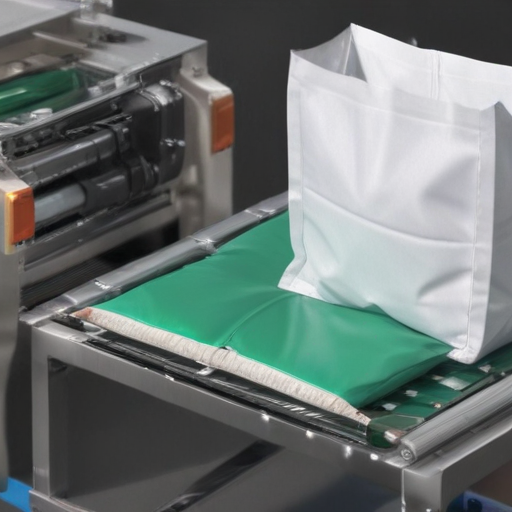
How to use “automatic bag filler”
Using an automatic bag filler is a straightforward process designed to save time and ensure consistency in filling bags with various products. Here’s a concise guide on how to use it:
1. **Setup and Preparation:**
– **Positioning:** Place the automatic bag filler on a stable, flat surface, ensuring it’s near a power source.
– **Calibration:** If required, calibrate the machine according to the manufacturer’s instructions to ensure accurate filling.
2. **Loading Materials:**
– **Hopper Loading:** Fill the hopper with the product you intend to package (e.g., grains, powders, or pellets).
– **Adjust Settings:** Use the control panel to set the desired fill weight or volume for each bag.
3. **Bag Placement:**
– **Attach Bags:** Open a bag and attach it to the filling spout or mechanism. Some machines might have clamps or holders to secure the bag in place.
– **Alignment:** Ensure the bag is properly aligned to avoid spillage.
4. **Initiating the Filling Process:**
– **Start Machine:** Press the start button or toggle the switch to begin the filling process.
– **Monitoring:** Watch the initial few bags to ensure the machine fills them correctly and consistently.
5. **Post-Fill Actions:**
– **Sealing:** Once a bag is filled, remove it carefully and proceed to seal it using a heat sealer or another sealing method appropriate for your material.
– **Continue Cycle:** Repeat the process for subsequent bags.
6. **Maintenance:**
– **Cleaning:** Regularly clean the machine to prevent cross-contamination and ensure longevity.
– **Inspection:** Periodically inspect parts for wear and tear, and replace them as needed.
By following these steps, you can efficiently use an automatic bag filler to streamline your packaging process.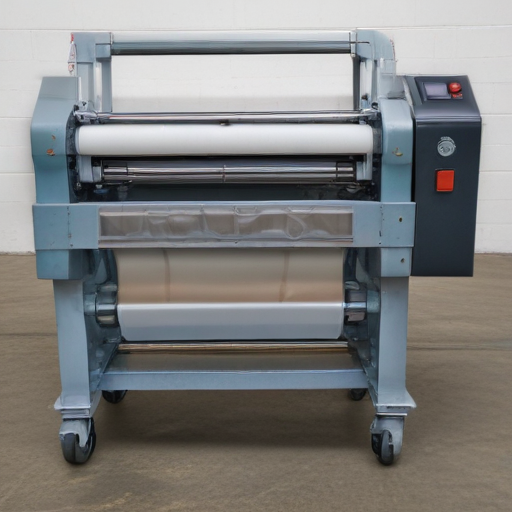
List Properties and Terms of “automatic bag filler”
An automatic bag filler is a type of industrial machinery designed to fill bags with a wide range of materials, including powders, granules, and other bulk products, with minimal human intervention. The primary purpose of such equipment is to enhance productivity, accuracy, and efficiency in various manufacturing and packaging processes.
### Properties:
1. **Precision Filling**: Ensures accurate weight or volume of the product in each bag, reducing material wastage.
2. **High-Speed Operation**: Capable of filling a large number of bags per hour, improving throughput.
3. **Versatility**: Can handle various bag types and sizes, accommodating different materials.
4. **Automation**: Minimal human intervention required, featuring programmable controls for operation, adjustments, and maintenance.
5. **Integration**: Can be integrated with upstream and downstream packaging equipment such as conveyors, sealers, and printers.
6. **Safety Features**: Equipped with safety interlocks, emergency stops, and sensors to ensure operator safety and machine longevity.
7. **Durability**: Constructed from robust materials such as stainless steel to withstand industrial use and hostile environments.
8. **Ease of Cleaning**: Designed for quick disassembly and cleaning, suitable for industries with stringent hygiene standards.
### Terms:
1. **Feeder System**: The mechanism that delivers the material to the filling unit; can be vibratory, screw, or auger-based.
2. **Bag Clamp**: Device that holds the bag securely in place during the filling process.
3. **Weighing System**: Integrated scales to ensure precise filling according to set weight parameters; can be gravimetric or volumetric.
4. **Control Panel**: Interface for configuring and monitoring the machine’s operations, often programmable and user-friendly.
5. **Discharge Chute**: Directs the product into the bag, often equipped with dust suppression features for powdered products.
6. **Bag Sealing Unit**: Optional add-on that seals the bag after filling; can be heat-sealed, tied, or zip-locked.
Overall, an automatic bag filler is essential for industries that require quick, efficient, and accurate bagging solutions, such as food processing, pharmaceuticals, agriculture, and chemicals.
List The Evolution history of “automatic bag filler”
The history of automatic bag fillers traces back to early mechanized filling methods. Here’s a concise evolution:
1. **Early 20th Century**: The introduction of basic mechanized systems for filling bags, primarily in grain and agricultural industries. These relied on gravity and manual labor to control product flow into bags.
2. **Mid-20th Century**: The development of semi-automatic bagging systems featuring conveyor belts and manual controls. These systems improved efficiency by partially automating the process, allowing operators to focus more on quality control.
3. **1960s-70s**: Emergence of fully automatic bag filling machines. Innovations included pneumatic and hydraulic systems for better accuracy and speed. Industries such as cement, chemicals, and food started to adopt these automated solutions.
4. **1980s**: Integration of electronic sensors and programmable logic controllers (PLCs) which enabled better precision, consistency, and reduced human errors. These systems could now handle a variety of products and bag types with minimal manual intervention.
5. **1990s**: Introduction of touch-screen interfaces and computer controls. This era saw significant improvements in user interface, making machines easier to operate and monitor. The focus shifted towards increasing efficiency and reducing downtime.
6. **2000s**: Technological advancements led to smart bagging systems with self-adjusting features and real-time data analytics. Connectivity options allowed for remote monitoring and diagnostics, facilitating predictive maintenance.
7. **2010s-Present**: Ongoing developments in automation and robotics. Modern automatic bag fillers feature high-speed robotics, advanced vision systems, and AI algorithms, capable of optimizing the entire filling process autonomously. Safety, energy efficiency, and environmental concerns have also become crucial design aspects.
Overall, automatic bag fillers have evolved from simple mechanical devices to sophisticated, interconnected systems that enhance productivity, accuracy, and flexibility across various industries.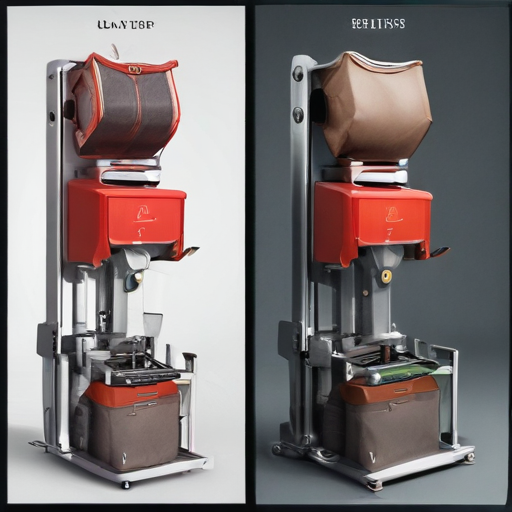
How to Select a Reliable automatic bag filler
Selecting a reliable automatic bag filler is crucial for maintaining efficiency and quality in your operations. Here are key factors to consider within a concise framework:
1. **Define Your Requirements**:
– **Type of Product**: Identify whether you’re filling powders, granules, liquids, or solids to ensure compatibility.
– **Bag Type and Size**: Determine the dimensions, material, and weight range of your bags.
2. **Technical Specifications**:
– **Accuracy**: Look for fillers with high precision to minimize wastage.
– **Speed**: Assess the filling rate to match your production demands.
– **Versatility**: Ensure the machine can handle different products and bag sizes if needed.
3. **Build Quality and Durability**:
– **Materials**: Select machines made from high-grade materials (stainless steel for food, chemical industries).
– **Construction**: Check for robust engineering with minimal wear and tear components.
4. **Automation and Technology**:
– **Ease of Use**: Intuitive interfaces reduce training time.
– **Integration**: Verify compatibility with existing systems (e.g., conveyors, labelers).
5. **Maintenance and Support**:
– **Serviceability**: Opt for designs that facilitate easy cleaning and maintenance.
– **Manufacturer Support**: Strong after-sales service and a readily available supply of spare parts are critical.
6. **Reliability and Reputation**:
– **Brand Credibility**: Established brands with positive market reviews usually offer more reliable equipment.
– **References**: Seek testimonials or case studies from similar industries.
7. **Cost-Effectiveness**:
– **Initial Investment vs. Long-Term Costs**: Balance upfront costs with long-term value, including efficiency savings and maintenance expenses.
8. **Compliance and Safety**:
– **Regulatory Standards**: Ensure the filler meets industry-specific regulations (e.g., FDA for food, ATEX for explosive environments).
– **Safety Features**: Look for emergency stop functions and protective guards.
By systematically evaluating these aspects, you can select an automatic bag filler that aligns with your operational needs and ensures a reliable, efficient production process.
List “automatic bag filler” FAQ
### Automatic Bag Filler FAQ
**1. What is an automatic bag filler?**
An automatic bag filler is a machine designed to fill bags with a variety of products, such as grains, powders, or small items, with minimal human intervention. It automates the bag-filling process to increase efficiency and accuracy.
**2. How does an automatic bag filler work?**
The machine typically uses sensors and programmable controls to handle bags, measure the correct amount of product, and fill the bags. It may also seal, label, and transport the bags via a conveyor system.
**3. What types of products can be filled using an automatic bag filler?**
These machines can handle a range of products, including powders, granules, seeds, food items, chemicals, and even liquids, depending on the specific model and configuration.
**4. What are the benefits of using an automatic bag filler?**
– **Efficiency:** Faster bag-filling operations compared to manual methods.
– **Accuracy:** Reduced product wastage due to precise filling.
– **Labor Savings:** Fewer staff required to manage the process.
– **Consistency:** Uniformly filled bags each time.
**5. Can the machine fill different sizes of bags?**
Yes, many models can be adjusted to accommodate various bag sizes. Some advanced machines can switch between different sizes with minimal adjustments.
**6. Is it easy to operate and maintain?**
Most automatic bag fillers are designed to be user-friendly, with intuitive controls and detailed instruction manuals. Regular maintenance, such as cleaning and calibration, is necessary to ensure optimal performance.
**7. How much does an automatic bag filler cost?**
Costs can vary widely based on the machine’s capacities, features, and brand. Prices typically range from a few thousand to several hundred thousand dollars.
**8. What industries commonly use automatic bag fillers?**
Industries including agriculture, food and beverage, chemicals, pharmaceuticals, and construction frequently use automatic bag fillers.
**9. Do I need special training to operate the machine?**
Basic training is usually required to operate the machine safely and effectively. Most manufacturers provide training sessions or detailed manuals to educate operators.
**10. How long does installation take?**
Installation times can vary, generally ranging from a few hours to several days, depending on the complexity and the specific setup requirements.
**11. What kind of maintenance is required?**
Routine checks, cleaning, lubrication, and calibration are typically required to maintain the machine. Some models also feature diagnostic tools for easier troubleshooting.
**12. Can the machine be customized?**
Yes, many manufacturers offer customizable options to tailor the machine to specific needs or to handle unique products.
By understanding these basics, businesses can make informed decisions about integrating an automatic bag filler into their operations.
Top 10 FAQ with answer about automatic bag filler for Buyer Sourcing from China
Sure! Here are the top 10 frequently asked questions (FAQ) about sourcing an automatic bag filler from China, along with concise answers:
1. **What is an automatic bag filler?**
– An automatic bag filler is a machine designed to efficiently fill various types of bags with different products, increasing productivity and reducing manual labor.
2. **Why source from China?**
– China offers competitive pricing, a wide range of manufacturers, and advanced technologies. Many suppliers also have experience in exporting and can provide comprehensive support.
3. **How do I find reliable suppliers?**
– Use platforms like Alibaba, Global Sources, and Made-in-China. Look for suppliers with good reviews, trade assurance, and verified status. Also, consider recommendations from industry contacts.
4. **What certifications should I look for?**
– Check for ISO certifications, CE marking (for European standards), and FDA approvals if applicable. These ensure the machine meets international quality and safety standards.
5. **Can I get customization?**
– Yes, many Chinese manufacturers offer customization based on your specific requirements like bag size, type of product, and production speed.
6. **What are the payment terms?**
– Common payment terms include 30% deposit upon order confirmation and 70% balance before shipment. Letters of credit and trade assurance might be alternatives for added security.
7. **What is the lead time?**
– Typically, the lead time ranges from 30 to 60 days, depending on the complexity and customization of the machine. Confirm this with your supplier.
8. **How do I ensure quality before shipping?**
– Request a pre-shipment inspection. You can hire third-party inspection agencies like SGS or Bureau Veritas for a detailed quality check.
9. **What about after-sales service?**
– Ensure the supplier provides comprehensive after-sales service, including spare parts, online support, and, if possible, on-site assistance.
10. **What are the shipping options?**
– Most suppliers offer FOB (Free on Board) terms. You can choose other terms like CIF (Cost, Insurance, and Freight) depending on your preference. Shipping by sea is common for large equipment.
These FAQs should help buyers streamline the process of sourcing an automatic bag filler from China.

